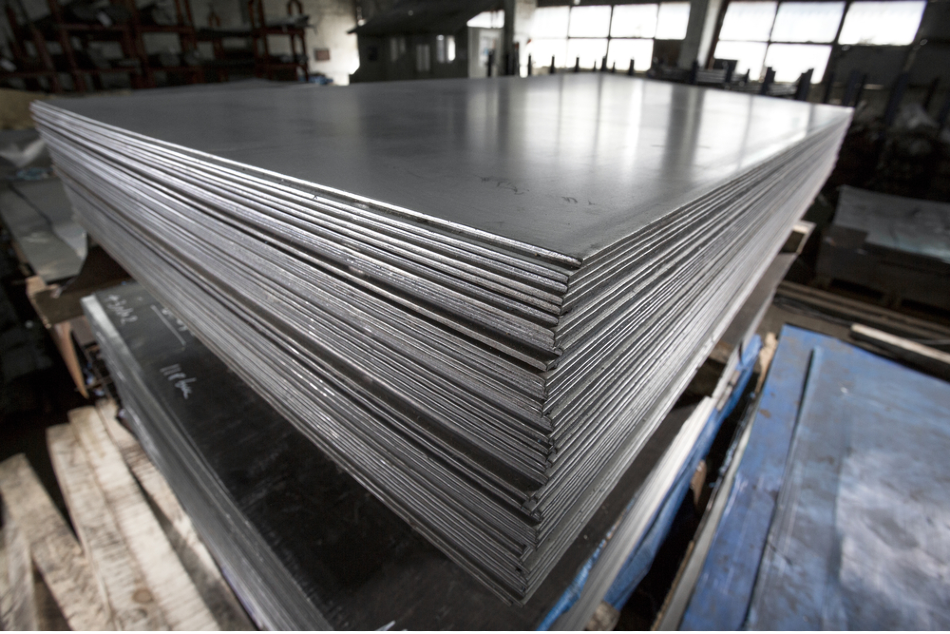Grade 416 stainless steel is a martensitic machining bar, with machinability enhanced by Sulphur and Phosphorus. This steel is sometimes used in hardened or unhardened and highly tempered condition, as it has a low cost and is easily machinable. Grade 416 is supplied in the form of a bar.

Image Credit: Shutterstock/Alexandru Rosu
Martensitic stainless steels are designed for high hardness, and other properties are compromised to a degree. Their useful operating temperature range is restricted by their loss of ductility at sub-zero temperatures, and loss of strength by over-tempering at high temperatures.
Compared to common austenitic grades, these steels have lower corrosion resistance. They do have resistance to fresh water, dry atmospheres, and mild alkalies and acids, but comparatively less resistance than the equivalent non-free-machining grades. High Sulphur content free machining grades, such as 416, are not suitable for marine or other chloride exposure. To achieve maximum corrosion resistance, the steel has to be in the hardened condition with a smooth surface finish.
Grade 416 has a fair resistance to scaling in intermittent service up to 760°C and up to 675°C in continuous service. It is not recommended for use in temperatures exceeding the appropriate tempering temperature.
Chemical Composition
| 1.4005 Steel |
EN 10088-3:2005 |
| Chemical Element |
% Present |
| Carbon (C) |
0.06 - 0.15 |
| Chromium (Cr) |
12.00 - 14.00 |
| Manganese (Mn) |
0.0 - 1.50 |
| Silicon (Si) |
0.0 - 1.00 |
| Phosphorous (P) |
0.0 - 0.04 |
| Sulphur (S) |
0.15 - 0.35 |
| Molybdenum (Mo) |
0.0 - 0.60 |
| Iron (Fe) |
Balance |
Properties
| Physical Property |
Value |
| Density |
7.75 g/cm³ |
| Thermal Expansion |
9.9 x 10-6/K |
| Modulus of Elasticity |
200 GPa |
| Thermal Conductivity |
24.9 W/m.K |
| Electrical Resistivity |
0.57 x 10-6 Ω.m |
| Mechanical Property |
Value |
| Proof Stress |
450 Min MPa |
| Tensile Strength |
650 - 850 MPa |
Fabrication - Has to be completed using techniques that allow for a final harden and temper heat treatment, and for poor weldability.
Cold working - This technique is not recommended. It is suitable only for minor deformation. Cracking will occur with severe deformation.
Hot working - All hot work processes should be performed after uniform heating to 2100-2250°F (1149-1232°C). Hot working below 1700°F (927°C) could result in cracking.
Machinability - The metal provides excellent machinability. It has the highest of any commonly available stainless steels, at about 85% of that of a free-machining carbon steel. Machinability is best performed in sub-critical annealed condition.
Heat treatment - Full annealing by heating to 815-900°C for ½ hour per 25 mm of thickness. This is followed by cooling at 30°C/hour maximum to 600°C and air cooled.
Sub-critical annealing – The material is heated to 650-760°C and air cooled.
Hardening - Grade 416 can be hardened by heating to 925-1010°C, quenched in oil, and tempered to suit the mechanical requirements.
Condition: The tensile strength range (N/mm² or MPa) QT 650: 650-850
- QT 900: 900-1050
- QT 850: 850-1000
- QT 700: 700-850
- QT 800: 800-950
Weldability - The weldability is poor. If it is needed, Grade 410 low hydrogen electrodes can be used. It can be pre-heated to 200-300°C, which is followed directly with annealing or re-hardening process, or a stress relief at 650-675°C. If the weld does not need to be hard, Grade 309 austenitic stainless steel filler rod can be used.
Applications
The areas of applications of the grade 416 martensitic stainless steels are as follows:
- Automatic screw machined parts
- Washing machine parts
- Valve parts
- Gears
- Pump shafts
- Motor shafts
- Studs
- Bolts and nuts

This information has been sourced, reviewed and adapted from materials provided by Aalco - Ferrous and Non-Ferrous Metals Stockist.
For more information on this source, please visit Aalco - Ferrous and Non-Ferrous Metals Stockist.